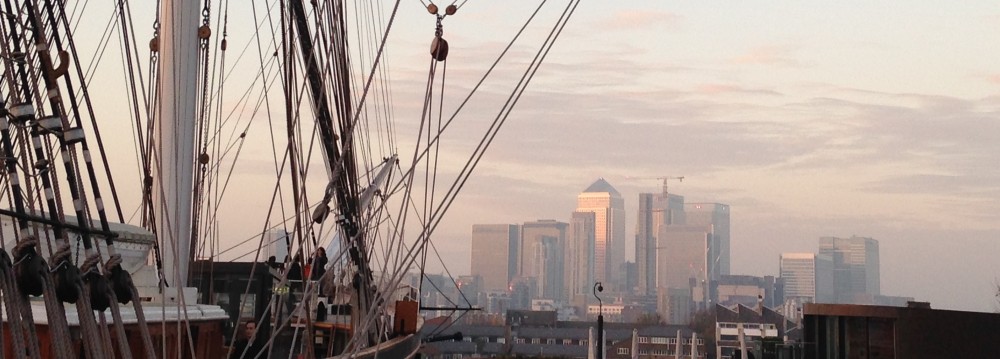Traveling through a slice of Central Europe
Despite a French transportation strike, I managed to fly out of Paris this week for meetings in Berlin and Geneva, with a side trip to Lausanne. While some transport workers proclaimed opposition to further European integration, it felt to me as if they were actually promoting European dis-integration. Airline has cancelled all of my original flights. But, Lufthansa staff kindly worked with me to find alternatives that got me where I needed to go. In the end, I came away feeling pretty good about the world. I’m pretty sure that the arrival of warm and sunny weather also contributed to my positive disposition.
A dash through Berlin
I get to Berlin every couple of years and with each visit I feel a little more attached to the city. This sentiment is actually helped along by a personal connection. In the 1880s, my great grandfather emigrated to the US from Berlin. He had been an organist in a large church there. So, the city figures somewhere in my family lore.
Berlin is a city with bountiful green space, lakes and flowing water, cultural opportunities (reasonably-priced opera tickets!), history and world class museums, plus quality food and drink. Not to mention shopping for those so inclined. It maintains an excellent public transportation system.
Whenever I visit I am struck by the dynamism of the place. Following reunification of East and West Berlin in 1989, the city set to work transforming and integrating itself. Two decades later the community has accomplished substantial renewal. Areas that were formerly cut off or disrupted in the communist past have revived as cultural centers (e.g., around Potsdamer Platz), pedestrian zones (e.g., around Nikolai church), or tourist zones (e.g., around Brandenburger gate).
But, parts of the city remain large construction sites as the renewal continues. Cranes dot the skyline. A controversial project to rebuild the Berliner Schloss — a former royal palace in the city center (ruined in WWII) — has just gotten underway after several years of debate. The metro system is expanding. New commercial construction continues apace. Alas, leaving much still to explore, my schedule indicated it was time to depart for Geneva and Lausanne.
- Recommendation: We had a nice meal outdoors at the Julchen Hoppe restaurant on the edge of the Nikolai Quarter of the city. Our meal included traditional foods and decent wine at a reasonable price. Very nice wild mushroom soup and fresh asparagus, fish and fowl main courses.
Swiss quality in Geneva and Lausanne
Geneva
I have written about Geneva in an earlier post, but there is more. This time I had business at several international organizations including the World Trade Organization (WTO).
I am always amazed at the wonderful headquarters of the WTO, the William Rappard Center, which was built in the 1920s to house the International Labour Organization (ILO). At a time when communist revolution was in the air, the ILO was developed to address labor concerns and demonstrate that market economies could deliver better quality of life for workers. The original building has some palatial features, without being too extravagant. Nonetheless, the fountains, sculpture and murals reflect a blend of expressionist and classical art that honors the value of labor in fueling economic growth and well-being.
During this visit, construction had blocked the main entrance and I wound up being channeled through the Chinese garden that is on the grounds. This was my first visit to the garden and it provided a pleasant and unexpected entry to the facility. That evening Geneva was radiant in the late-day sun and early summer weather. I took advantage of the fine evening to stroll along the Rhone and Lake Leman, before deciding to eat outdoors at a local Chinese restaurant in honor of the WTO garden.
Lausanne
During my stay, I made an afternoon visit for a meeting at IMD, a prestigious business school in the city of Lausanne. After all of the transportation disruption in France, the train ride over to Lausanne on the Swiss rail system provided a welcome contrast. The trains over and back departed in a timely fashion, traveling quickly and sailing along the rails with remarkably smooth suspension and quiet interiors. So nice!
Lausanne is a small city set in gorgeous countryside on Lake Leman. The Alps rise from the water on the opposite shore. Between Geneva and Lausanne, vineyards and farms dot the lake shore amidst various small towns. I took the metro from the Lausanne train station down to the lake. Due to the slope of the hill the metro is built on quite an angle, which was rather surprising to a flat-lander like me. I stopped for a soft drink at a local cafe on Lausanne harbor. Inertia nearly got the better of me and I had to strain against the warm, sunny, lazy afternoon feeling in order to get to my meeting on time.
Paris – Using Charm to Put Things Right
My return to Paris proved mercifully uneventful. The transport strikes had passed and the grey, cool dampness had moved on in favor of sunny weather. I pulled out the grill for a BBQ with friends and took a fresh look at Paris. As usual, after disrupting my life and travel once again, Paris turned on its charm and won back my affection.
Photo from Berlin
Photos from Geneva and Lausanne
(Copyright, Doug, 2013, 2021)





